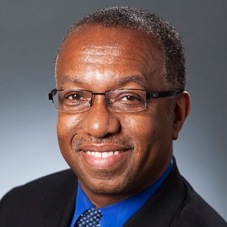Philanthropy411 is currently covering the Communications Network Fall 2013 Annual Conference conference with the help of a blog team. This is a guest post by Norris West, Director of Strategic Communications at The Annie E. Casey Foundation. Follow Norris on Twitter – @NorrisWest.
 This is my second Communications Network conference, and there is little doubt that I will return for a third. The plenary sessions, workshops and networking are feeding my appetite for the interactions that will send me back to Baltimore full of ideas.
This is my second Communications Network conference, and there is little doubt that I will return for a third. The plenary sessions, workshops and networking are feeding my appetite for the interactions that will send me back to Baltimore full of ideas.
My conference experience started with a pre-conference workshop, Data-Driven Communications: Analytics/Tools for Strategic Planning, Message Development and Evaluation. To be honest, the session wasn’t exactly what I had expected. As communications professionals, we face the constant challenge of identifying the right metrics to show how successful we are at engaging target audiences. So I signed up for the conference, led by Hattaway Communications, to find the Holy Grail for measuring communications results with precision.
Yes, there was some discussion of evaluation, but a wonderful session on framing messaging, changing attitudes and using data to understand which ideas are trending in the media. The presenters provided excellent tools such as its “road map to impact” that showed a five-step process on motivating people to take action. To get there, the Hattaway presenters said, our audiences must:
- Be aware of the need. Effective communications can accomplish that by telling people something that is both surprising and relevant, moving them from unawareness to awareness;
- Care about the cause. Our job is to connect to people’s hopes, values and emotions;
- Understand the problem and solution. Use metaphors, personification and other devices that help people relate to the cause;
- Feel a sense of urgency. We must be clear about what we’re asking people to do and make it simple, and even fun, to get them from apathy to urgency; and
- Know how to help. We have to show people how they can go from just supporting our cause to taking action around it.
The session provided a wealth of other keen insight. One example: Hattaway worked with the Obama campaign and shaped the debate over the debt ceiling by advising supporters to stop the words “debt ceiling,” which resonated negatively with the public. Using “winning words” – in this case “default” – set a different context. As individuals, we wouldn’t want to default on our mortgages, and as a nation, we also need to be responsible and not default on our obligations.
That was good stuff. The session provided a great start to the conference, although I continue to seek better quantitative and qualitative performance measurements for our work.
On Day Two of the conference, there were more good workshops, but the most interesting thing for me was a revelation of why I find working as a philanthropic communicator so rewarding. I had a hallway conversation with Fred Mann, who had conducted the morning plenary session interview of David Simon, my former colleague at The Baltimore Sun (and brilliant creator of one of television’s best-ever shows, The Wire.) I wanted to ask Mann about his approach to interviewing Simon, and that eventually led to a good discussion about our everyday work.
Mann is associate vice president for communications at the Robert Wood Johnson Foundation and a former Philadelphia Inquirer reporter. We reminisced about our days working at strong newspapers and concluded that in at least one very significant way, our former profession shares something in common with our current jobs.
“We went into journalism because we wanted to change the world,” Mann said. We agreed that in our current roles, we have the privilege of working through philanthropy to make the kind of changes we pursued while working in journalism.
Indeed, we are fortunate to work in a field where we can help shape the lives of children, families and communities – no matter whether we operate on a local level, nationally or internationally. It is empowering, and it carries enormous responsibility. Instead of working in journalism, we find ourselves working with journalism. In his talk, Simon didn’t have any particular suggestions for how philanthropy can make a bigger difference, other than his the good suggestion that foundation boards include people whose problems we seek to address. I think we can make a difference, and sometimes philanthropy provides breakthrough results, although they are still hard to see when so many children and families continue to catch hell.
And maybe that is why Jim Casey, the founder of our philanthropy, said we must always carry a sense of “constructive dissatisfaction.” When the need remains so great, we can’t afford to become complacent and be too proud of our accomplishments. We have the power to make a difference, so it is important for us to keep striving to get better. Changing the world has never been easy, but it helps to aspire to the same goals that inspired me as a young newspaper reporter. This conference provides many of the tools that help.






